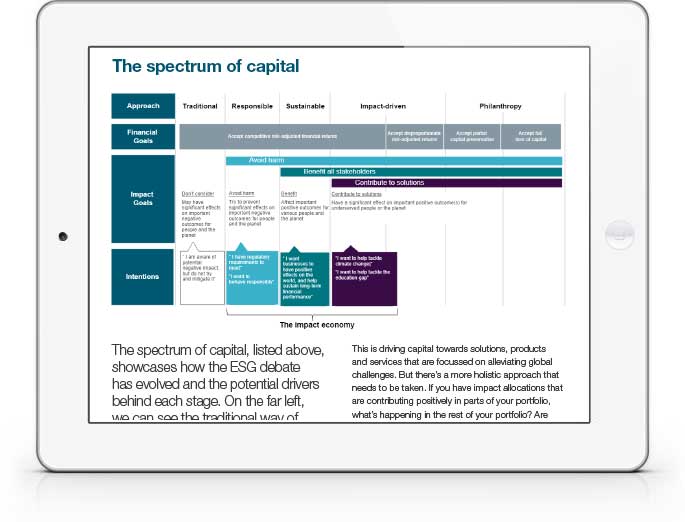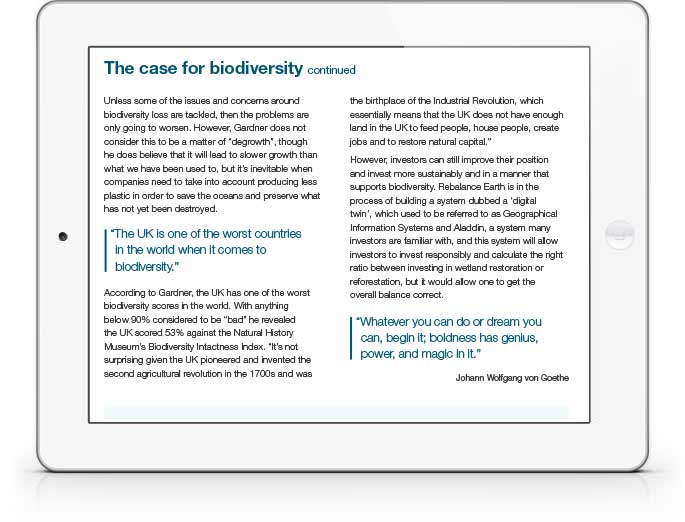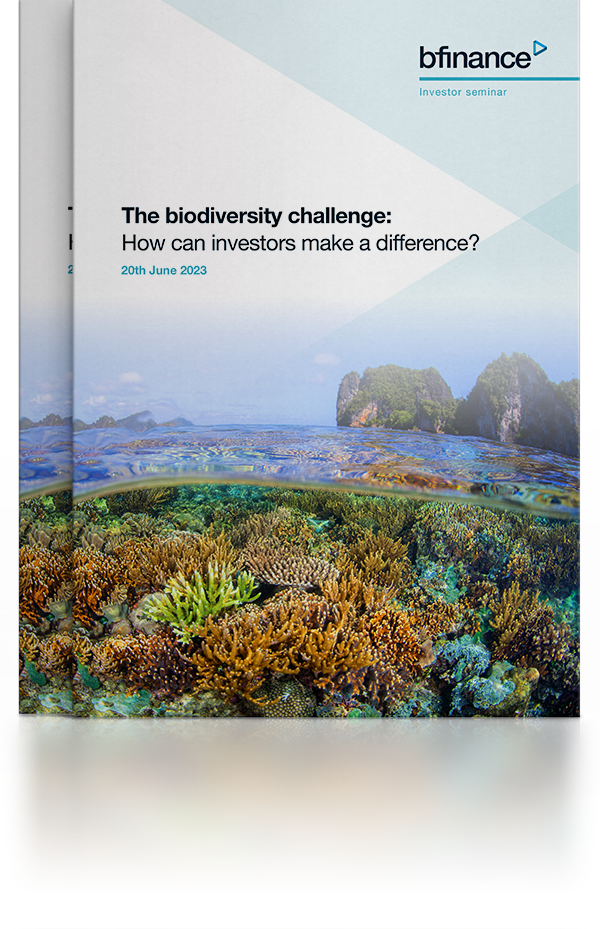
IN THIS PAPER
Speaker Robert Gardner, Co-CEO and Co-Founder of Rebalance Earth, a firm whose mission is to create high-integrity nature credits that protect and grow biodiversity, capture carbon and generate prosperity for the communities that preserve nature, gave an overview of the work they are doing to preserve and restore biodiversity.
Speaker Flora Gaber, Head of ESG Analysis at AP7, part of the Swedish public pension agency, sat down with bfinance’s Martha Brindle to discuss her organisation’s ESG journey so far and its participation as a member of the Task Force on Nature-related Financial Disclosures, a group that is developing a science-based framework that will enable companies and financial institutions to integrate nature into decision making.
Panelists Sarita Gosrani, Director of ESG and Responsible Investment at bfinance, Amelia Tan, Head of Responsible Investment Strategy at LGIM and Anne-Laurence Roucher, Deputy CEO, Head of Private Equity and Natural Capital, Mirova, sat down to discuss recent progress in integrating biodiversity considerations into investment portfolios.

WHY DOWNLOAD?
Awareness of the need to battle climate change and become more sustainable has never been more prevalent and with that comes the responsibility to combat biodiversity loss. The seminar revealed that, in economic terms, US$44 trillion of global aggregated GDP (almost half) is either “moderately” or “highly” dependent on nature and US$ 13 trillion is “highly dependent”, according to an often-cited 2020 report from the World Economic Forum. Yet biodiversity still largely goes unnoticed, perhaps because “the health of the planet is not on anyone’s balance sheet and profit and loss”, one presenter suggested during the briefing.
Within this niche, complex area, data is still very much limited and strategies and implementation methods are still being developed, as are regulations. But positive steps are being taken and the Task Force on Nature-related Financial Disclosures (TNFD) has been working tirelessly to develop a framework that market participants can abide by. In the seminar, we had the pleasure of hearing Flora Gaber, Head of ESG Analysis at AP7, one of the two asset owners involved in the TNFD’s beta pilot phase, recall her experience and highlight some of the opportunities in the space.
We hope that this overview helps investors gain a broader understanding of biodiversity as a topic and offers food for thought when it comes to implementing practices and strategies to support the preservation and restoration of biodiversity. More broadly, we encourage investors to conduct routine re-evaluation of their internal policies and guidelines, as well as challenging their managers’ policies, so we can tackle this challenge at an industry level and drive positive change.
Important Notices
This commentary is for institutional investors classified as Professional Clients as per FCA handbook rules COBS 3.5R. It does not constitute investment research, a financial promotion or a recommendation of any instrument, strategy or provider. The accuracy of information obtained from third parties has not been independently verified. Opinions not guarantees: the findings and opinions expressed herein are the intellectual property of bfinance and are subject to change; they are not intended to convey any guarantees as to the future performance of the investment products, asset classes, or capital markets discussed. The value of investments can go down as well as up.


 English (Global)
English (Global)  Français (France)
Français (France)  Italiano (Italia)
Italiano (Italia)  Dutch (Nederlands)
Dutch (Nederlands)  English (United States)
English (United States)  English (Canada)
English (Canada)  French (Canada)
French (Canada) 

